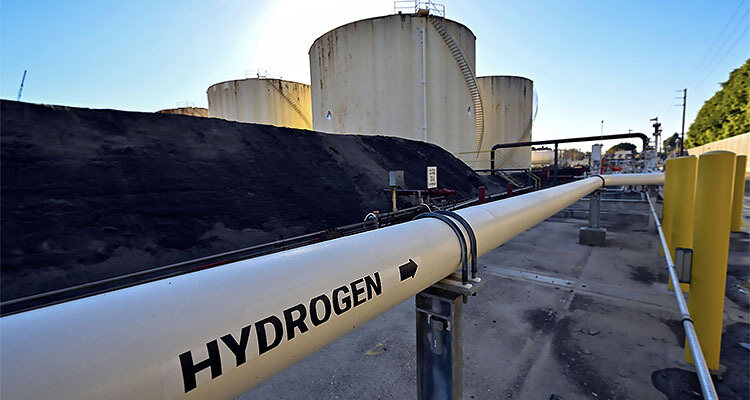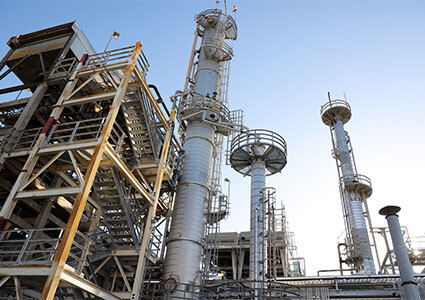
From aviation fuel to green hydrogen, World Energy is paving the way for global decarbonization
World Energy is a low-carbon solutions provider, focused on assisting the world’s leading companies to hit net-zero goals and sustainability commitments. Its portfolio includes sustainable aviation fuel, renewable diesel, and renewable naphtha, with plans in place to also produce renewable propane and green hydrogen.
Gene Gebolys, World Energy’s CEO, joins us to discuss the market of sustainable fuel alternatives and share his insight on the company’s emergence into the world of sustainable aviation fuel (SAF). “Ever since I graduated in 1996, I’ve been intrigued by the notion that fossil-based diesel could be replaced with a more sustainable, renewable alternative,” he begins. “I quickly realized that this industry was not about making the product, but about establishing the market itself, so I started working within the political power structure of the US and creating policy to market biodiesel.
 “I founded World Energy in 1998 to build the market for new cleaner advanced biofuels. Our way to do that was by focusing on customer and distribution and to build supply through contract manufacturing. It was still a small sector, but we grew to around 75 percent of the market share during our early days. We moved into manufacturing ourselves for the first time in 2003 and started to produce fuel for export to Europe, establishing a global presence that led us to production in different parts of the world.
“I founded World Energy in 1998 to build the market for new cleaner advanced biofuels. Our way to do that was by focusing on customer and distribution and to build supply through contract manufacturing. It was still a small sector, but we grew to around 75 percent of the market share during our early days. We moved into manufacturing ourselves for the first time in 2003 and started to produce fuel for export to Europe, establishing a global presence that led us to production in different parts of the world.
“Our activity is largely driven by regional and national policies, so in 2008, our business fundamentally changed when European policy added barriers to the import of US-based material,” Gene recalls. “Coincidentally, the Renewable Fuel Standard emerged in the US at a similar time, so we adapted the business to suit the changes coming into force in both regions.”
Having established a strong global presence, a big change for World Energy came in 2018 with the purchase of a bio-fuel refinery in Los Angeles, California, which saw the company enter the SAF market. “At the time, California was home to several trends and policies in the advanced biofuels market, so the refinery was strategically located for us to rapidly respond to the emerging demand for SAF,” Gene explains.
“Although we were a 20-year-old business, we had to figure out a new approach. Aviation is particularly difficult to decarbonize because the only way to do it is through the fuel tank. While SAF is costlier than traditional jet fuel, use of SAF is the only way to truly decarbonize flight. This meant we had to implement a new economic system where we get paid for the process of decarbonization, rather than propulsion being the only revenue generating factor.
“The same year that we purchased the refinery – 2018 – also saw us announce a major expansion plan, which is now well underway. We expect it to be fully functional in late 2026, at a cost that will exceed $2 billion. We’re striving to be the most advanced refinery in the world, producing solely renewable-based products, with the vast majority of that being SAF, connected by pipeline to Los Angeles International Airport.
“But when it comes to SAF, that’s only half the equation! We needed to work out how to take this initial investment to decarbonize flights anywhere around the world, not just from LAX. This is where it gets a bit more technical, as we had to separate the decarbonization work of the molecules from the fuel molecules themselves, to allow the emission reductions to be transferred anywhere.”
Providing more detail, Gene continues: “The molecules do two things; firstly, they propel the aircraft to ensure it safely flies from point A to point B, but secondly, they do so with a drastically reduced carbon intensity. To make the economics work, we’d have to be paid for the decarbonization, not just the propulsion.
“Decoupling the molecule, or the physical fuel, itself, from its decarbonization work is potentially the most important thing we’ve ever done as a company, as it enabled us to sell the decarbonization work of SAF anywhere in the world, regardless of where the propulsion work is done.
“We’ve always moved a step or two ahead of markets that haven’t quite taken shape yet, and we’re passionate about finding new ways to drive value into such markets. That brings us to the other important piece of this: a trusted system to ensure the integrity of the process. We started working with non-profit organizations and our existing customer base to create a traceable, high-integrity ecosystem to track the decarbonization attributes so companies could legitimately claim emission reductions. That system is called Book & Claim, and it’s really a ledger system. With Book & Claim, a customer purchases an amount of decarbonization, which equates to physical gallons of SAF. By paying for the decarbonization work, that customer covers the cost premium of producing SAF and can claim the environmental benefits.
“Microsoft isn’t taking delivery of the fuel. Our plant is near LAX, so the most carbon-efficient place to use the fuel is there, or other nearby airports. Book & Claim keeps track of the SAF delivered to the jet fuel supply chain because of their purchase. It doesn’t matter which airline pays for the propulsion and puts the SAF into their engines, only Microsoft can claim the emissions reduction because they were responsible for the expansion of supply. They get credit for the decarbonization that comes with that, no matter where it’s used. Getting companies like Microsoft onboard helps to promote the fact that our work can help global companies to efficiently meet their carbon reduction goals.”
Driving decarbonization
Testament to the revolutionary potential of SAF, World Energy fueled the world’s first transatlantic flight with 100 percent SAF in November 2023, in partnership with Gulfstream. “The concept of decoupling not only creates a solid foundation for us but enables the entire aviation industry to get involved with decarbonization and improve the carbon characteristics of every aircraft, anywhere in the world,” Gene proposes.
Aside from SAF, World Energy is becoming increasingly involved in the area of green hydrogen. “What we do next is guided by our current activities and the concept of continuous improvement. While finding a way to decarbonize through SAF, we came across another focus, to reduce the carbon intensity of the hydrogen required for the hydroprocessing needed to make SAF.
“We started looking at how we could reduce the carbon impacts of the hydrogen we used to make SAF. Working with our partners at Air Products, we went on a learning journey together to determine how best to source cleaner hydrogen to create even cleaner SAF,” Gene reveals. “Our main feedstock for hydrogen production is our own biogenic gases, which are created as a byproduct of fuel production. We’re capturing gases that would normally have been emitted, and then putting them back in the process to make hydrogen.
“Hydrogen is a natural expansion of the work we’re doing in SAF and advanced biofuels as they all depend on hydrogen. We’re focused on bringing clean hydrogen to market and taking the necessary action to establish a strong presence within the sector.”
As our conversation draws to a close, talk inevitably turns to World Energy’s future. “It’s an interesting topic for us; it doesn’t feel as though we’ve done anything substantial yet, but rather spent 25 years honing our ability to derive value and gearing up to what’s coming next. By decoupling the two types of work the molecules do, we’ll unleash incredible economic power to wider society over the next decade.
“We’ll continue to identify efficient ways to ensure companies across the globe can access our technology and decarbonize their operations, even in the hardest-to-abate sectors,” Gene concludes. “We’re currently working with companies in Europe, for instance, to create better processes around the import of green hydrogen produced in Canada, which will be used to manufacture clean steel. Overall, our goal remains to provide real traceable value for our customers and drive meaningful decarbonization throughout the global economy.”